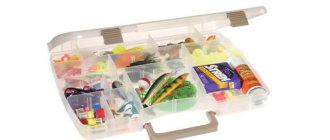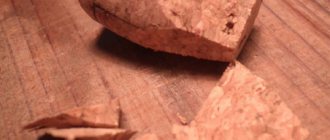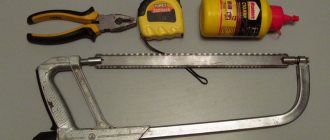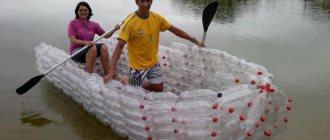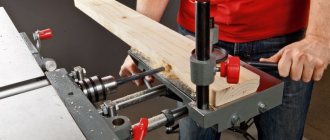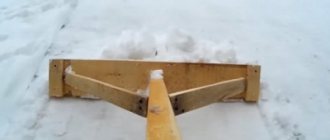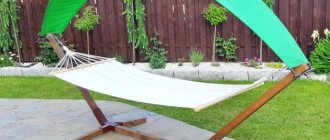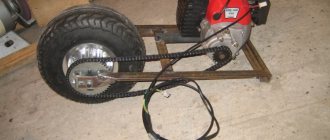Oscillating spoons, or simply spinners, are a type of artificial bait for catching predatory fish. It is a piece of metal plate bent into a bizarre shape (although there are exceptions) with a tee hook on one side and a ring for attaching a fishing line on the other. It is believed that any self-respecting fisherman should have a set of the most common types of spoons in his arsenal.
Oscillating spoons are used when fishing both with spinning and trolling, and with vertical lures. The first method is, of course, more common. The main models of oscillators include:
Ural. Along with the Prokhorovka, it is used by fishermen for catching salmon species, but it can also perform well when fishing for pike.
Prokhorovka. Classic salmon bait. It has been used for quite a long time and successfully on the rivers of Siberia and the Kola Peninsula. The game is active, sweeping, with good amplitude.
Crocodile. The basis of this spoon is a classic Swedish model from AVU. It is distinguished by embossing on both sides, reminiscent of crocodile skin. It performs well at various depths when catching all types of predatory fish.
Cobra. A small spinner with a high range and flight accuracy. The game of this spinner resembles the game of fry. Excellent for catching asp in the hunt.
Atom. Russian development. At different wiring speeds it plays differently. Slow retrieving makes it oscillate smoothly and harmoniously, while fast retrieving encourages active play. An excellent option for pike fishing.
These are just the main types of baits that can be found in stores. Unfortunately, the dominance of various manufacturers on the fishing lure market has completely killed some types of spoons and they have lost their former catchability.
The advantages of oscillators include the following:
- Long cast. This allows you to hunt wary fish or expand the fishing area of the reservoir.
- They do not twist the line, unlike rotating ones.
- Their behavior and shape resemble fish, which provokes the interest of a predator.
Making oscillating spinners with your own hands can have several positive aspects. This is the necessary material and shape of the spoon, its size and weight. For some reason, homemade spinners perform better than purchased ones. Well, in the end, making these artificial baits at home is an interesting and not as expensive process as buying them in a store.
Where and when is perch caught in winter?
In cold weather you can meet a predator anywhere. Fish are voracious by nature and are in constant search of food, moving around the reservoir for prey. There are also favorite places. During periods of warming, the river robber can appear in shallow water, close to the shore, where there is a lot of vegetation. Cold weather forces the fish to go lower to the bottom.
The most productive fishing occurs at a depth of about 2 meters. It should be remembered that the hunter should look for it in places where there is a sandy bottom, near the border of reed thickets, on underwater hills, where snags and trees that have fallen into the water accumulate.
Perch is not picky about weather conditions, but it happens that in windy weather or when the atmospheric pressure changes, fishing may not work. The predator bites most actively in the morning; during the day and evening the catch will be smaller. But it is impossible to speak unequivocally about the effectiveness of early fishing. In cases where the fish did not bite in the morning, you can count on a bite in the afternoon or in the evening.
Nowadays, there are a large number of types of winter attachments on the market. But with all the variety of choice of ready-made baits, the popularity of hand-made baits does not fall.
- Firstly, you need to be able to play with newfangled types of spinners; awkward, inept behavior leaves a negative impression.
- Secondly, not all manufacturers follow the manufacturing technology; many skimp on materials, which leads to disruption of the trajectory of the bait in the water. In general, fishing may not work out if low-quality bait is used.
There are a large number of types of homemade spinners for perch with your own hands from scrap materials in a short period of time.
Advantages of tubular spinners
There are several types of spinners that can be made from a tube at home. A tube spinner is easy to make and has great advantages:
- With the help of tubes, you can produce an effective, productive and interesting game that reproduces the movements of fish.
- These tackles are compact, but have enough weight, which is enough for long casting.
- Low manufacturing cost.
- Relatively easy to assemble.
- Readily available materials.
- It can be used multiple times.
- There is no fear of losing it, since you can quickly make a new copy.
- Suitable for vertical luster.
But, despite the undeniable advantages, tubes also have a number of disadvantages:
- You must be able to handle it correctly, because if used ineptly, predatory fish will not be interested in the bait.
- If fishing is carried out among a large amount of algae, then the tackle will often cling to it.
Drawing of a homemade working lure for perch
A drawing of a homemade working spoon for catching perch is shown in the picture.
At the end of the topic, I will explain what, in my opinion, is the difference between a working perch spoon and the so-called catchable winter vertical perch spoon. Although, there shouldn't be any difference at all. If the perch does not pay attention to the vertical “game” of the working spoon, then why do we need this person in the collapse of our baits?
A drawing or template will only be needed to immediately solder a batch of approximately identical WORKING homemade vertical spinners for catching perch on winter or summer fishing trips.
The definition of “workers” is not in vain - the Internet is teeming with offers to buy some mythical, so-called CATCHable winter lures for perch - homemade and industrially made. And, as I understand it, such a spoon should almost catch us a large perch without our participation.
True, for some reason the unsurpassed masters of such homemade products do not offer drawings of their wonderful winter vertical perch lures for public evaluation.
But, if you turn your head on for a while and think a little, then even a novice fisherman becomes clear: such spinners simply do not exist in nature. The same homemade vertical perch bait cannot work the same under different conditions for catching perch in winter and summer fishing, and no “secret” drawings will help it with this.
Components
The spinner consists of the following elements:
- head – a weight in the shape of a fish head or a big-eyed ball;
- petal - spoon spoon;
- comb – semi-oval with several holes for tying fishing line, like on a cicada (from 1 to 8 holes);
- frame made of ferrous wire 0.8-1 mm.
Main characteristics of winter spinners
There are specific requirements for baits for ice fishing for perch:
Depending on the depth at which the fish are caught, bait is selected. The dimensions of winter lures for perch with your own hands are about 40mm. During the deep winter period, when a school of predators descends to a depth of 3 m, it is better to catch it with a smaller spoon, about 30 mm. But for underwater hunting at great depths, you should choose long spoons, up to 60 mm. They are perfect for catching striped bully in pools and depressions on the bottom.
Of course, the shape of the bait should resemble a live fish. There are many modifications, such as narrow oblong, diamond-shaped ones, like a drop of profit.
The weight depends on the size of the spoon itself, and, naturally, on the fishing conditions, it can vary from 2 - 16 grams.
- The direct relationship is obvious: the shorter the length of the nozzle, the less its weight.
- Based on the hook attachment, baits with a fixed hook are distinguished, i.e. rigid fastening. And they are distinguished by their special catchability with a playing type of fastening. The hook can be single, double or triple.
- Rigid fastening of the hook is achieved by soldering it to the body. Non-fixed fastening is obtained by attaching the hook to the winding rings or to the chain. This type of attachment is optimal during periods when the fish is passive. The movements of an artificial fish can stir up a striped hunter.
- A fixed hook is used during stable play, when the predator is especially hungry.
- According to the material from which homemade baits are made: it can be any available elements.
- There are many variations of spinners made from a spoon, from a piece of tube, from a hairpin, etc. But sheet blanks made of copper, brass, and stainless steel are more often used.
Perch is a predator. It’s not for nothing that people call him a bully. Fish loves the game. Reacts to bright colors, shimmer and shine. Homemade specimens are made from different metals, iridescent: silver/gold. To attract attention, an attack point is placed on the hook. Perch loves beads, cambrics, and bright threads attached to a bait hook.
Possibilities of a unique bait
The capabilities of the spinner have not been fully explored. Today it is obvious that this is a universal spinner for any season , for any retrieve - twitching, jigging, stop and go, uniform retrieve.
The spoon is designed for trolling, casting and vertical trolling. Ulyanka is a combination of cicada and wobble . You can’t find it for sale in Russia, but semi-professional ulyankas, made in a handicraft way, work successfully on all bodies of water - on still water, on currents, at great depths and with surface wiring.
Winter lures for perch by type
Lures for fishing under ice are divided according to the quality of wiring, game and distribution of the center of gravity into:
| Vertical or bottom | Planning | Bulk | Step |
| The center of gravity of these is concentrated in the lower part. They play vertically without deviations from the trajectory. When I land, they lift up everything that is at the bottom, thereby attracting additional attention from the predator. | Petal-shaped. Due to the configuration, during play they deviate greatly, oscillating, from the center of the hole. | Those in which the center of gravity can be redistributed from side to side. They are lowered to the bottom in a horizontal position. | These are those baits whose shape is curved, similar to a crescent. The hook is rigidly fixed. The bait moves vertically towards the bottom, reminiscent of descending steps, which is where this species got its name. |
Let's look at the main, most popular types of spinners and how to make a spinner for perch.
To work you should have the following tools:
- metal scissors
- hammered
- awl
- rasp
- sandpaper.
Carnation spinner
This type of bottom spoon for perch with your own hands is one of the most popular. There are a lot of variations in shape. It can be a triangle or an oval. The edges can be either sharp or rounded. The basic idea is that the bait should resemble a small fish. Manufacturers adhere to this principle when making a spinner that looks like a fry.
An imitation fish should attract the attention of a predator, so copper and stainless steel are ideal materials for homemade baits.
To make a nail type spinner you will need a sheet of copper, a hook, solder and soldering acid, and wire. A drawing is made on a copper base, according to which two parts are cut out. The wire is used to form a hook attachment, which is soldered to one of the blanks.
Siberian homemade products
The fifth point we would like to mention is a user of our site who has repeatedly participated in competitions for homemade baits and tackle. Gennady (Gennadii.) decided to open a “waste-free production” and not throw away unnecessary parts. How do you like this idea? Three different spinners, three different games and all from one Chinese spoon.
Do-it-yourself Maropedka. Setting up the spoon, catching perch
The winter spinner Maropedka is a vertical type bait for catching perch and other predatory fish from the ice in a vertical position. Since 2014, after information about the catchability of the spinner was leaked, the popularity of the spoon has only grown every year.
The Maroped has everything it needs to gain popularity among fishermen who are interested in winter fishing:
- a strange but memorable name - “maropedka”;
- simple design that allows you to make a spinner at home;
- catchability for perch, both pike and pike perch are caught;
Maropedka - a simple but catchy spoon
As we have already said, the Maroped is an incredibly simple, but very catchy spinner that collects fish like a “vacuum cleaner.”
Reviews of the Tsar Fish lure
Thanks to the feedback from fishermen and specialists, we can draw some conclusions about the described bait. These lures are catchy, since their inventor tests everything himself, and if anything does not spin as it should, the bait is remade. The Tsar Fish spinner, which has only rave reviews, is unique in its design.
True, some fishermen note its high cost. If the reservoir is snagy, then with significant snags and cliffs, fishing will hit your pocket hard. But many amateurs liked spinners, and they enjoy fishing with them. How many people, so many opinions. One thing can be said that the work of the inventor of the Tsar Fish spinner is worthy of respect and recognition.
Non-snacking
You can also make non-hooking spinners from this kind of bait. Such gear can be used quite effectively in conditions of dense underwater vegetation, in snags and other hard-to-reach places. It is quite possible to buy a non-tackling spinner in a store, but their selection is not very large, which is why it can be difficult to find a working one, but the prices for them are not encouraging. For these reasons, many fishermen make such structures themselves.
In order to make a non-snagging bait, you must have:
- Any vibrator (you can use a previously made one).
- Single or double hook with straight shank.
- Soldering iron and solder or two rivets and a drill.
- A piece of thin, stiff steel wire.
To make bait you need:
- Insert the shank of the hook into the bottom hole of the spoon so that it is located along its back wall (sometimes it is necessary to slightly bend the tip of the spoon or drill out the hole).
- Solder the eye of the hook to the back wall of the spoon (you can drill a hole and use a rivet for reliability, since not every metal can be soldered well).
- Bend a small loop at the end of the wire.
- Bend it and cut it so that the loop lies on the back wall of the spoon, and the end touches the tip (or two, in the case of a double) of the hook.
- Solder the loop to the spinner (in this case you can also use a rivet).
It is worth noting that in most of these baits the hook points are directed not forward, but backward. This is due to the ease of manufacture, as well as the undesirability of soldering the front surface of the spinner, so as not to spoil its appearance.


